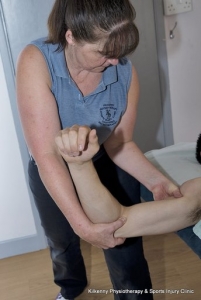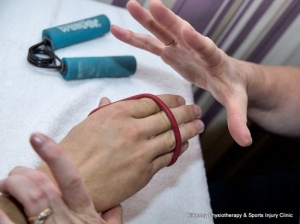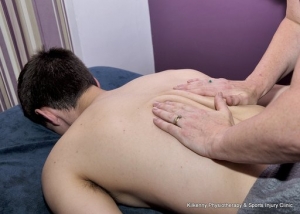Arthritis Treatment in Kilkenny
Joint pains and associated muscle pain and weakness are often caused by arthritis. Our physiotherapists in KPC are trained to help with most types of arthritis.
There are 5 main types of arthritis;
- Osteoarthritis (OA)
- Rheumatoid arthritis (RA)
- Septic Arthritis
- Juvenile arthritis
- Ankylosing spondylitis
Osteoarthritis (OA)
Osteoarthritis is the degeneration of cartilage covering joint surfaces. As it progresses, it causes damage to the underlying bone.
Essentially, it’s like a speeding up of the natural degeneration of joints due to ageing, wear and tear. It can occur in any joint in the body and often occurs as a result of an old trauma to a joint. Your joints can also be affected by repetitive overuse or adverse forces causing the joints to run out of line. As the condition progresses, the surrounding soft tissues may become involved and become painful too.
In Kilkenny Physiotherapy Clinic, we use a variety of approaches to treat OA. This includes manual therapy, joint mobilisations, soft tissue techniques and sometimes electrotherapy, wax and heat to treat the pain. We provide home exercise programmes which aim to strengthen weak muscles and stretch tight muscles. This helps to support the joint, therefore limiting further damage and promoting good function.
We may also prescribe orthotics to correct the alignment of the foot.
Rheumatoid arthritis (RA)?
Rheumatoid arthritis is an inflammatory disease, causing inflammation of the synovial lining of the joints. It often affects the smaller joints, such as the wrists, hands and feet. As the disease progresses, it also affects the tissue around the joint, including tendons, fat pads and the sheath surrounding the tendons. Symptoms of Rheumatoid arthritis include pain, stiffness after rest, joint swelling, general weakness, and fatigue.
Our approach is to look at the whole body, and how the rheumatoid arthritis is affecting you daily. In Kilkenny Physiotherapy Clinic, we treat the joints individually as well as devising home exercise programmes to strengthen muscles and protect joints. We look at the patient as a whole and try to maintain and maximise function.
Septic arthritis
Septic arthritis is a very painful infection in a joint. It can be caused by bacteria or a virus which infects the joint causing inflammation of the synovial membrane. It may affect one or more joints. Septic arthritis can occur at any age but it most commonly seen in the hip or knee of children under three.
Physiotherapy is not usually advocated in the acute stages, but may be needed when the infection is resolved to strengthen and stretch affected areas.
Juvenile Arthritis
Juvenile chronic arthritis or juvenile idiopatic arthritis (JIA) is arthritis occurring in a child under the age of 16, in one or more joints for at least six weeks.
In our clinic we will use electrotherapy, wax and manual techniques to treat the condition in it’s painful stages. We will also use exercises to treat the pain, restore function and protect the joints.
Ankylosing Spondylitis (AS)
Ankylosing Spondylitis is an arthritis of the spine and pelvis. It involves the development of excessive boney growth at joint edges. The areas most affected are the spine and sacroiliac joints (SIJ). The joints become stiff and the spine looses it’s upright position, causing the S curves become more C shaped. The hips, knees, ankles and shoulder joints may become affected as the disease progresses. AS is frequently associated with other chronic inflammatory diseases.
Physiotherapy has a huge role to play in the treatment of Ankylosing Spondylitis. In Kilkenny Physiotherapy Clinic we use various modalities to reduce the pain and improve function. We use exercise to maintain or restore muscles strength and posture, and our rehab exercise classes are invaluable here. We also use joint mobilisations and soft tissue release where appropriate to maintain mobility in the spine.





